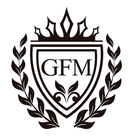Introduction
Brief explanation of Moroccan leather
Moroccan leather is a unique and high-quality material that is known for its exceptional quality and unique characteristics. This versatile material is used in a variety of products, from shoes and bags to furniture and decor.
Purpose of the article
The purpose of this article is to provide a comprehensive guide on Moroccan leather, exploring its history, production process, and various types of leather available. This guide will help readers understand the unique features and properties of Moroccan leather, and how to find the perfect product for their needs.

Shop for moroccan leather bags
History of Moroccan Leather
Overview of the history of Moroccan leather
Moroccan leather has a rich history that dates back centuries. The art of leather tanning has been passed down through generations in Morocco, and the craftsmanship and techniques used today are still similar to those used in ancient times.
Evolution of the industry
Leather production was once a cottage industry in Morocco, with small workshops scattered throughout the country. However, as demand for Moroccan leather grew, larger factories were established, and the industry expanded . This has allowed for the preservation of traditional methods while also incorporating modern technology to improve efficiency and quality.( Learn more about Moroccan leather industry)

Production Process
Selection of hides
The selection of hides is a crucial step in the production process of Moroccan leather. The quality of the hide will determine the quality of the final product. The hides are chosen for their texture, thickness, and overall quality. They are also selected based on the type of leather that will be produced, different types of hides have different properties that are suitable for different products. Sourcing of hides Moroccan leather is made from locally sourced hides, mainly from sheep, goats, cows and camels. These hides are obtained from the local farmers and nomadic herders who raise these animals for meat and dairy production. The hides are collected and inspected for any defects or damages before being sent to the tanneries. Grading of hides Once the hides are received at the tanneries, they are graded based on their quality and thickness. The top grade hides are used for high-end products such as leather bags, shoes, and furniture, while the lower grade hides are used for lower-end products like belts, wallets and other small leather goods.
Cleaning and soaking
The hides are then cleaned and soaked in water to remove any impurities. This step is crucial in ensuring that the leather is free from any dirt, dust or other contaminants that may affect the final product.
Treatment with natural ingredients
The hides are then treated with a mixture of natural ingredients, such as pigeon droppings and tree bark, to soften and prepare them for tanning. These natural ingredients help to preserve the leather and give it its unique color.
Tanning using Natural Tannins
The tanning process itself is done using a combination of traditional and modern methods. The hides are first treated with natural tannins from tree bark and other plants, which helps to preserve the leather and give it its unique color.
Treatment with Chemicals
After tanning, the leather is then treated with chemicals to ensure its durability and resistance to water and fading. This step is crucial in ensuring that the leather is resistant to wear and tear, and will last for a long time.
Types of Moroccan Leather
Goatskin leather
- Characteristics
Goatskin leather is known for its durability and resistance to water. It is a strong and sturdy material that is often used in shoes, bags, and other accessories.
- Uses
Goatskin leather is often used in the production of shoes, bags, wallets, and other accessories. Due to its durability, it is also a popular choice for outdoor gear and equipment.

Cowhide leather
- Characteristics
Cowhide leather is known for its softness and suppleness. It has a smooth and buttery texture that makes it a popular choice for furniture and decor items.
- Uses
Cowhide leather is often used in furniture upholstery, such as sofas and armchairs, as well as in home decor items like picture frames and book covers.

Sheepskin leather
- Characteristics
Sheepskin leather is known for its warmth and comfort. It is a soft and fluffy material that is often used in clothing and footwear.
- Uses
Sheepskin leather is often used in clothing such as coats, boots, and gloves, as well as in footwear such as slippers and boots.
D. Camel leather
- Characteristics
Camel leather is known for its strength and durability. It is a tough and rugged material that is often used in bags and other accessories.
- Uses
Camel leather is often used in the production of bags, such as backpacks, purses and briefcases. It is also used in the production of belts and wallets.
Each type of Moroccan leather has its own unique characteristics and uses, making it important to understand the different types available in order to find the perfect product for your needs.
Conclusion
In this article, we have explored the world of Moroccan leather, including its history, production process, and various types of leather available. We have highlighted the unique characteristics of each type of Moroccan leather and discussed the most common uses for each.
Recommendations for finding the perfect Moroccan leather product
When looking for a Moroccan leather product, it is important to consider the intended use, as well as the desired characteristics of the leather. For example, if you're looking for a durable and water-resistant leather, goatskin leather would be a good choice. If you're looking for a soft and supple leather for furniture or decor, cowhide leather would be a great option. It's also important to ensure that you purchase from reputable manufacturers or vendors to ensure that you're getting a high-quality product.
